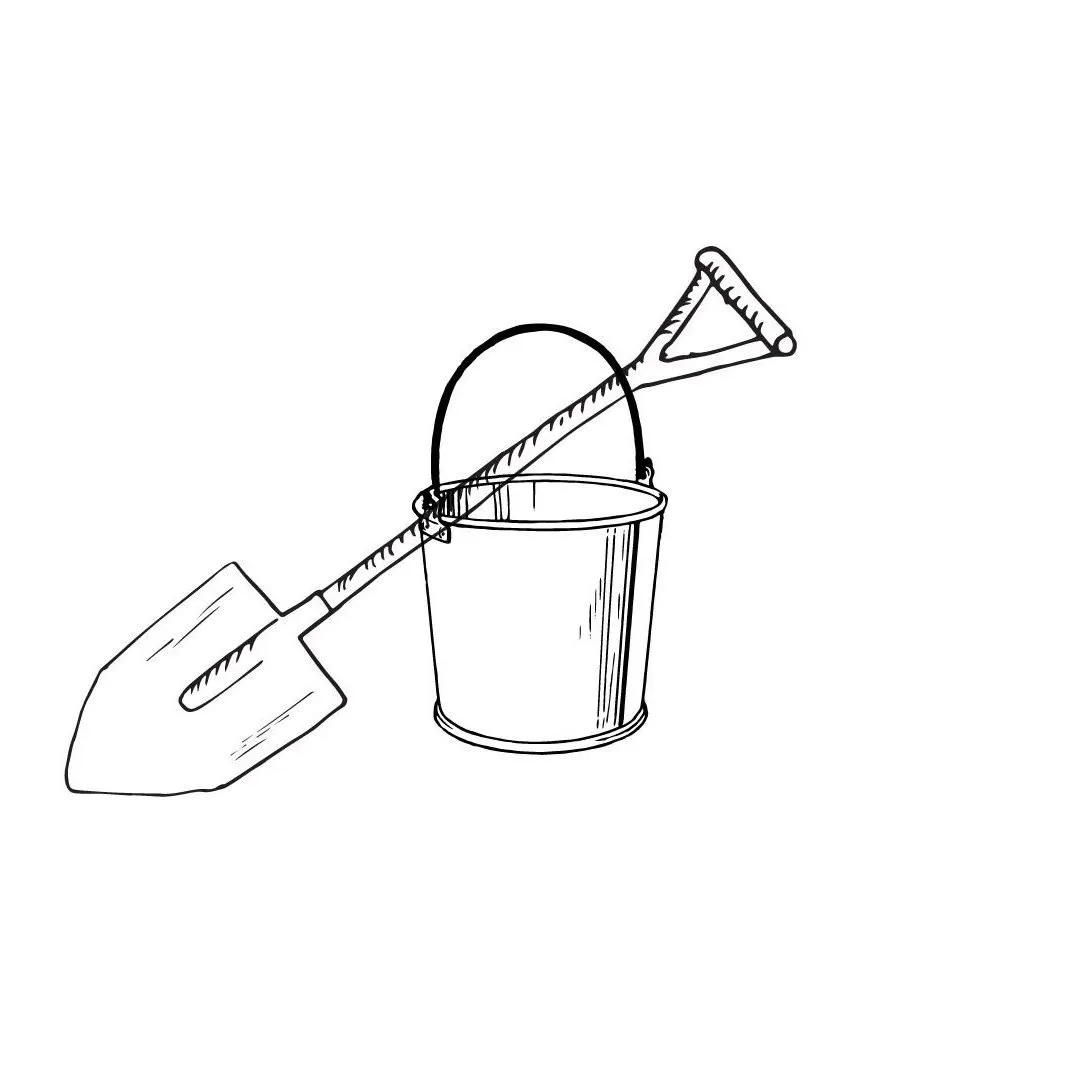A lot of people love dogwood trees for their pretty spring flowers and bright fall leaves. They are often used to improve landscapes because of their beautiful colors and graceful shapes. But a lot of people don’t plant dogwoods because they’re afraid they won’t do well in clay soil.
Dogwoods do best in loose, well-drained soil, but with the right care and preparation, they can do well in clay as well. This complete guide tells you how to plant and grow dogwood trees in clay soil that are healthy and happy.
Understanding Dogwoods
There are about 60 to 70 species of dogwood trees in the genus Cornus. Some popular types are:
-
Dogwood flower (Cornus florida) – known for its pink blooms in the spring and its red leaves in the fall. Grows 15 to 30 feet tall.
-
Kousa dogwood (Cornus kousa) – Flowers later than flowering dogwood. Tolerates drought and heat. Grows 15-25 feet tall.
-
Pacific dogwood (Cornus nuttallii) – West coast native with large white flowers Grows up to 60 feet tall,
In their natural habitat, dogwoods grow as understory trees near the edges of forests and woodlands. They thrive in part shade with some protection from harsh sun and wind.
Key benefits dogwood trees provide:
- Beautiful flowers, foliage, bark, and fall color
- Wildlife habitat and food source
- Erosion control due to fibrous, spreading roots
- Screening and privacy when planted in groups
Preparing Clay Soil for Planting
Clay soil contains dense mineral particles that compress together when dry. This results in poor drainage and difficulty establishing roots. However, with some TLC you can modify clay soil to create a thriving environment for dogwood trees.
Here are some tips:
-
Test drainage – Dig a 12″ hole and fill with water. If it doesn’t drain in 12 hours, the site needs amending.
-
Add organic matter – Incorporate 3-4 inches of compost or rotted manure to improve drainage and moisture retention.
-
Loosen soil – Double dig or till the soil to a depth of 8-12 inches to loosen compacted layers.
-
Plant on slopes – Choose a site with a slight slope to encourage drainage away from the tree.
-
Grow in raised beds – Construct raised beds filled with high quality soil if drainage remains a major issue.
How to Plant Dogwood Trees in Clay Soil
Once you’ve prepped your site, follow these steps for planting success:
Pick the right time – Plant in early spring before buds emerge or in fall after leaves drop. Avoid summer’s heat.
Dig wide planting hole – Dig 2-3 times wider than the root ball but no deeper.
Loosen subsoil – Loosen and mix the soil at the bottom of the hole to allow root penetration.
Check planting depth – Ensure the root flare sits slightly above ground level. Don’t plant too deep.
Backfill with amended soil – Fill the hole gently with native soil mixed with compost. Do not tamp!
Water thoroughly – Water slowly and deeply after planting to saturate soil without runoff.
Add mulch – Apply 2-4 inches of shredded bark, leaves, or wood chips. Pull back from trunk.
Stake if needed – Stake for support if site is windy. Allow some sway for strong growth.
Caring For Dogwoods in Clay Soil
Keep your dogwood thriving with proper care and maintenance:
-
Water 1-2 times per week during the first year, providing 1-2 inches total. Check soil moisture and water slowly.
-
Fertilize in early spring using an organic, slow-release fertilizer. Apply annually.
-
Prune only when needed to maintain shape, remove dead branches, or thin interior for airflow.
-
Renew mulch ring each year, keeping it 4-6 inches from the trunk. Organic mulch conserves moisture.
-
Aerate compacted areas around the tree to allow air and water movement to the roots.
-
Monitor for pests/disease including borers, canker, anthracnose, and powdery mildew. Address issues promptly.
-
Protect from lawn equipment to avoid wounding the trunk and roots.
Dealing With Common Dogwood Problems in Clay Soil
Heavy, dense clay soil can lead to some challenges for dogwood trees:
Poor drainage – Results in overly wet roots leading to root rot. Improve drainage before planting.
Compacted soil – Hard layers prevent root growth. Loosen soil and aerate regularly.
Nutrient deficiencies – Clay doesn’t hold nutrients well. Fertilize appropriately.
Drought stress – Clay dries out. Mulch and water thoroughly and slowly.
Trunk/root damage – Clay is difficult to dig in. Carefully plant and avoid wounds.
Pests and diseases – Wet clay encourages fungal and insect problems. Allow air circulation. Monitor closely.
Chlorosis – Yellowing leaves. Usually an iron deficiency. Apply chelated iron supplement.
With proper preparation, planting, and care, dogwood trees can grow successfully in clay soil. The key is addressing drainage by amending the soil with organic matter before planting. Provide plenty of water during establishment while also taking care not to oversaturate the root zone. A little TLC goes a long way in helping dogwood trees feel at home in heavy clay soil. The end result will be a spectacular showcase of spring blooms and vibrant fall color to beautify your landscape for years to come.

How to Grow a Dogwood Tree After Planting
After you have mastered how to plant a dogwood tree, you will need to take care of it. Fortunately, the dogwood tree is pretty easy to grow. Here are some basic information on watering and pruning a dogwood tree.
How to Plant a Dogwood Tree: Materials Needed
- You will need two sets of hands and someone else to hold the tree straight up when you plant it.
- A bucket or other container to soak the tree roots in water if the tree doesn’t have any roots already there.
- A shovel or spade for digging
- Tree guards for protecting against animal damage
- 1-2 Gallons of Water

- The dogwood tree will either come in a pot or bare root, which means it will not have any soil on it. Do not put the tree in the shade. Instead, take it out of the box it came in and put it somewhere cool (not freezing). g. your garage.
- As soon as you get a bare-root tree that has been shipped for more than four days, put it in water for six to twenty-four hours and plant it right away.
- If you have to wait more than a week to plant the tree because it is bare root, make sure to spray the roots with water every day. The roots will stay healthy and wet if you keep them in wax paper. The trees can stay in a cool, shady basement or garage. Then soak in water for 6-24 hours and plant afterwards.

You should prepare the planting area before planting the tree.
- These plants do well in soils that have a pH of about 5. 5 to 7. Soil that is too wet and doesn’t drain well will hurt them because they like it when the ground is moist and drains well.
- You can test the soil for acidity and drainage before planting. There are easy, cheap ways to do this. Most soils fall in the 6. 0-7. 0 pH range.
- You can add organic matter like compost to your soil to make it more nutritious, but you don’t have to. Or add lime to balance the acidity if needed.
- Till the soil so that the nutrients are mixed in and the soil doesn’t get too packed down. This will help the roots grow well.

- When you plant the tree, you want the top of the root ball to be just above the ground. This will make a small mound around the tree.
- To give the roots of a tree that came in a pot some room to grow, dig a hole that is about twice as wide as the pot. Since you want the top of the root ball to be above ground level, the hole should be about a quarter of the way deep as the pot.
- If the tree is bare roots, you need to dig a hole that is twice as wide as the root ball, or the circle of roots. The depth can be about the same as the root ball.

- The tree should be carefully taken out of its pot and put in the middle of the hole if it is in one. When you put it down, make sure the root ball is just above the ground.
- If it’s bare root, make a mound of soil in the hole first. This way, when you put the tree down, the roots will slope down and spread out, leaving the tree above ground. If the roots start to twist, cut them back. This will enable the tree to spread its roots further.

- If you are planting from a pot, just fill in the soil until it is level with the ground.
- Putting the nutrient-rich topsoil you dug out near the roots of a tree that is held vertically and bare root is helpful. After putting half of the soil around the tree, gently press it down with your feet to get rid of any air pockets. Do not put compost or fertilizer in the hole where the roots are; this will hurt the tree. For the roots to stay hidden, put the rest of the soil on top and press down on it many times with your foot. For the tree, there should be a small hill above the ground.
- If the dogwood tree is on a slope or in a place that doesn’t get enough water, build a wall around it. Make a 2-foot raised edge of soil around the tree to keep the water in.
- Put mulch over the top of the soil near the tree to keep the water in the soil. Moreover weeds are less likely to grow. But the mulch shouldn’t touch the tree bark; it should be about 2 feet away.

- As soon as you plant the tree, give it about one to two gallons of water. If the soil goes down, add more soil.
- For the first year, water it once or twice a week with one to two gallons of water. Once the tree is well-established, you should only water it when it is stressed or during a drought.
- Also, make sure the tree gets enough water in the winter to keep it from drying out and dying. This happens when the leaves lose more water than the roots take in.

- Put a tree guard around the trunk as soon as you plant the tree. Rodents and rabbits will eat the bark off of the dogwood tree and kill it, so this keeps them away. The tree guards should let air flow in. The best defense against mice is a mouse guard that wraps around the bark. We didn’t suggest using them in the summer, though, because bugs can live between the mouse guard and the bark.
- Dogwood trees can be hurt by cold weather and strong winds. Planting in a wind tunnel is not a good idea, especially in the winter. Put up hedges or evergreen trees to block the wind.

Mastering Clay and Compacted Soils: Step-by-Step Guide to Successful Planting!
FAQ
What month is best to plant a dogwood tree?
Planting dogwoods in the fall gives the plants a better chance to establish a good root system before the coldest part of our winter weather. Planting in the December means less watering and maintenance to keep the young tree.
What is the best tree to plant in clay soil?
Some trees for clay soil are Norway and silver maples, aspen, cottonwood, river birch, hawthorns, lindens, willows and ginkgos; shrubs besides barberries include redtwig dogwood, snowberry, ninebark, forsythia, serviceberry, winged euonymus and sumacs.
What are the downsides of dogwood trees?
In general, flowering dogwoods don’t do well in soils that are packed down, dry, or poorly drained, or in neutral to alkaline soils or during long periods of heat and/or drought. Two of the most serious problems they are sometimes afflicted with are dogwood anthracnose and dogwood borer.
What is the best place to plant a dogwood tree?
Where to Plant Dogwood Tree. In nature, dogwood trees are understory trees that often grow in shade. In a home landscape, they grow best in a partial shade location that receives some morning sun. Plant a dogwood tree in fertile, well-draining soil with lots of organic matter and a slightly acidic pH.
